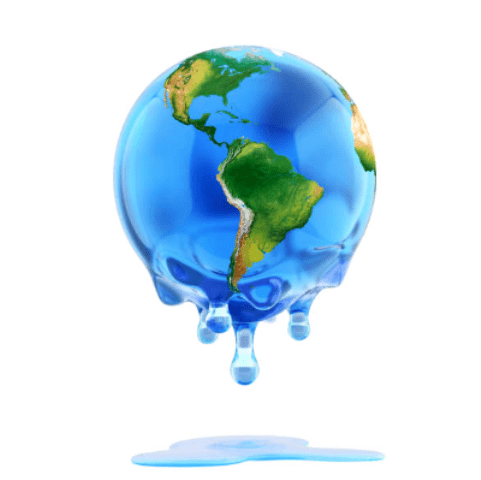
There is mounting evidence that climate change will affect Manitoba’s water quality over time. Water and climate change are inextricably linked. Climate change is affecting the planet’s water in complex ways. From unpredictable rainfall and shrinking ice sheets to rising sea levels, floods and droughts, most of the impacts of climate change are related to water.
Climate change is exacerbating both water scarcity and associated risks (such as floods and droughts) as rising temperatures disrupt precipitation patterns and the overall hydrological cycle.
What is Climate Change?
Climate change refers to long-term changes in temperatures and weather patterns. These changes may be natural, but since the 19th century, human activities have been a major contributor to climate change, largely due to the burning of fossil fuels (such as coal, oil, and gas) that produce heat-retaining gases.
Signs of Climate Change
Biodiversity on the decline
Catastrophic storms
Severe droughts
Sea Level Rise
Water scarcity
Major fires
Floods
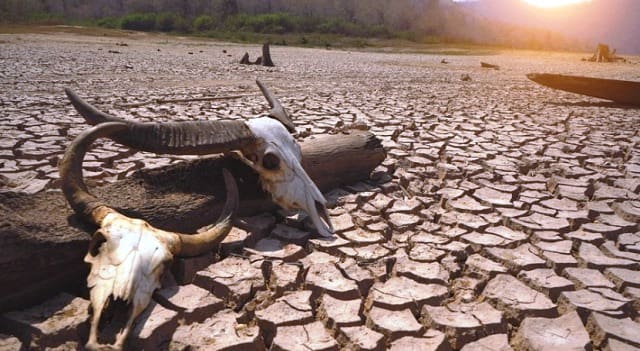
How does Severe Droughts Affect Water Quality?
Severe droughts can significantly affect water quality in a number of ways:
Reduced water availability:
Droughts lead to water scarcity, which can lead to reduced water resources in rivers, lakes, and reservoirs. As the water level drops, the remaining water becomes more enriched in impurities and pollutants, further degrading its quality.
Pollution Concentration:
When less water is available, pollutants and contaminants that would normally be diluted in larger bodies of water, become more concentrated. This includes agricultural wastewater, industrial waste and chemicals. Elevated levels of these substances can render water unfit for human consumption, irrigation or aquatic life.
Increased Salinity:
During periods of drought, reduced water flow and increased evaporation rates can result in increased salinity. In areas of saltwater intrusion, such as coastal regions, a lack of freshwater supplies can result in saltwater entering underground aquifers and contaminating sources of drinking water.
Algal Blooms:
Droughts can cause bodies of water to stagnate at high temperatures, which encourages the growth of harmful algal blooms. These flowers can release toxins into the water and pose a hazard to human health and the ecosystem. They can also lower oxygen levels in the water and lead to the death of fish and other aquatic organisms.
Depletion of Groundwater resources:
During periods of drought, there is often an increased dependence on groundwater resources as surface water resources decrease. As our demand for groundwater grows it will lower the water table and contaminate groundwater with pollutants such as salts, fertilizers and pesticides, thereby degrading groundwater quality. Manitoba’s aquifers are already under a lot of pressure because of increased water consumption over the last 20 years.
Infrastructure Deterioration:
Droughts can expose and damage water infrastructure such as pipes and tanks. Cracks and leaks in pipes can allow contaminants to enter the water supply system, while reduced water levels in tanks can lead to sediment build-up, contaminant concentrations and reduced water quality.
In general, severe droughts can exacerbate water quality problems by reducing water availability and pollutant concentrations, increasing salinity, promoting algal blooms, depleting groundwater and damaging infrastructure hydraulics. These impacts can have negative impacts on human health and the environment, underscoring the need for effective water management strategies in times of drought.
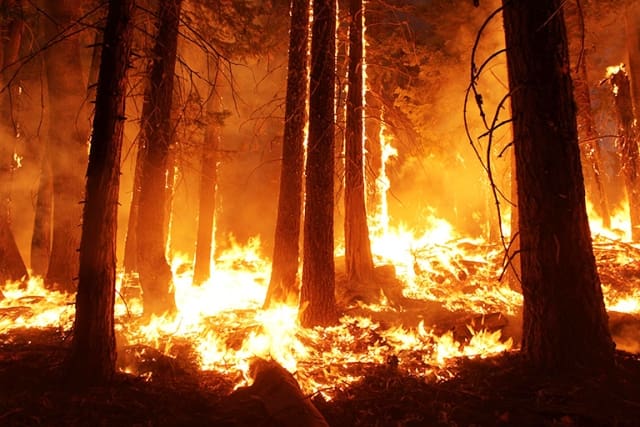
How do Fires Affect Water Quality?
As we now can see in places like California, and more recently Alberta with higher temperatures, and drought conditions, forest fires are becoming a real issue right across the country.
Major fires can have a significant impact on water quality in a number of ways:
Sedimentation:
In a fire, vegetation is burned and loss of vegetation cover exposes the soil. This increases the risk of soil erosion during rainfall, leading to the transfer of large amounts of sediment to nearby bodies of water. Sedimentation can degrade water quality by reducing transparency, clogging aquatic habitats, and suffocating aquatic life.
Ash and Debris:
Fires produce large amounts of ash and debris that can be carried by rain or carried away into streams, rivers, and lakes. Ash contains various pollutants such as nutrients, heavy metals and organic compounds that can contaminate the water. These pollutants can affect aquatic ecosystems and pose a risk to human health when the water is used for drinking or irrigation.
Increased nutrient loads:
Fires can release nutrients and organic matter such as nitrogen and phosphorus stored in vegetation into the environment. When these nutrients enter water bodies through runoff, they can lead to blooms of algae and other aquatic plants, leading to eutrophication. Eutrophication reduces the oxygen levels in the water, which harms fish and other aquatic life.
Chemical Contamination:
Fires can release a variety of chemicals, including those that occur in burned buildings or industrial areas. These chemicals can enter water bodies through runoff or groundwater infiltration. Pollutants such as heavy metals, polycyclic aromatic hydrocarbons (PAHs) and volatile organic compounds (VOCs) can remain in the environment, potentially contaminating water sources and posing risks to aquatic organisms and human health.
Altered water flow patterns:
Major fires can disrupt the water cycle and change the way water flows through the landscape. Loss of vegetation and the formation of hydrophobic layers in the soil can increase surface runoff, leading to flash flooding and erosion. These changes in water flow patterns can affect water quality by facilitating the transport of pollutants and sediments through bodies of water.
It should be noted that the specific impacts on water quality may vary depending on the severity and extent of the fire, the characteristics of the affected area (e.g. topography and soil composition) and the management practices used to mitigate the impacts. Local and environmental authorities often monitor and assess water quality after large fires in order to implement appropriate remediation and conservation measures.
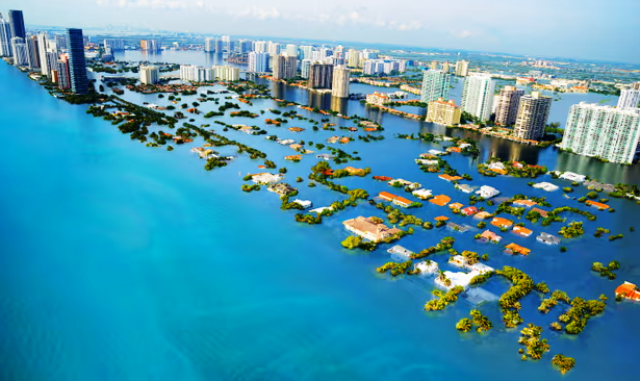
How Sea level Rise may Affect Quality of Water
Sea level rise can affect water quality in a number of ways, particularly in coastal areas. Here are some ways that sea level rise may affect water quality:
Saltwater intrusion:
As sea levels rise, saltwater can infiltrate freshwater sources such as aquifers and estuaries. This interference can contaminate drinking water supplies and agricultural irrigation systems, rendering them unusable. High freshwater salinity can damage aquatic ecosystems and affect plant and plant growth.
Increased Coastal Erosion:
Rising sea levels contribute to increased coastal erosion. This erosion can result in the release of pollutants and pollutants trapped in coastal soils and sediments. These contaminants can include heavy metals, toxins, and chemicals that can enter the water supply system and affect its quality.
Floods and Sewage Overflows:
Rising sea levels can increase the impact of storms, leading to more frequent and severe coastal flooding. Flooding can overload sewage systems, causing them to overflow and dumping untreated or partially treated wastewater into nearby bodies of water. This allows harmful bacteria, viruses and pollutants to enter the water, threatening both human health and aquatic ecosystems.
Disruption of ecosystems:
Sea level rise can affect the balance of coastal ecosystems by inundating and inundating critical habitats such as wetlands and mangroves. These ecosystems play a crucial role in filtering and purifying water, absorbing excess nutrients and protecting against pollutants. Their loss can lead to deterioration in water quality and an increase in harmful algal blooms and dead zones.
Changes in salinity and temperature:
Sea level rise can affect the salinity and temperature of coastal waters. Changes in salinity can affect the survival and reproduction of aquatic species and destroy entire ecosystems. In addition, rising sea temperatures can encourage the growth of harmful bacteria and pathogens and pose a threat to humans and marine life.
Displacement of communities:
Rising sea levels can displace coastal communities, forcing people to migrate to new areas or live in shelters. This massive movement of people can strain existing water infrastructure in receiving areas, potentially leading to water scarcity, increased competition for resources, and degradation of water quality due to poor sanitation practices.
Addressing the potential impacts of sea-level rise on water quality requires comprehensive coastal management strategies, including sustainable spatial planning, coastal defenses, improved wastewater treatment, and the protection and restoration of coastal ecosystems.
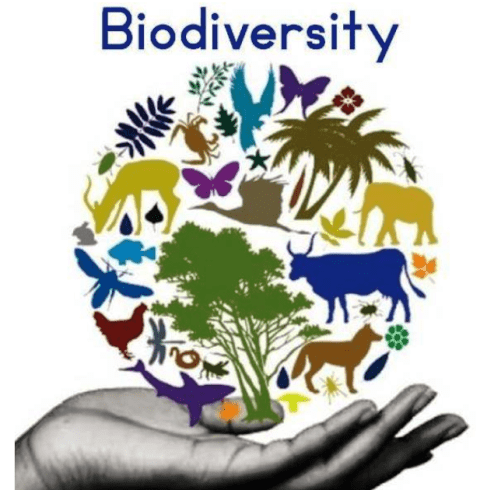
How does Biodiversity Decline Affect Water Quality?
Loss of biodiversity can have significant impacts on water quality. Biodiversity is the diversity and variability of living things in a particular habitat or ecosystem. Biodiversity loss can upset the delicate balance within ecosystems, including water systems, and have several negative effects on water quality. Here are some of the impacts of biodiversity loss on water quality:
Nutrient cycle:
Biodiversity plays an important role in nutrient cycling within ecosystems. Different species contribute to the processes of organic matter decomposition, nutrient uptake and recycling. For example, bacteria and fungi break down organic matter and release nutrients into the water. Declining biodiversity can reduce the efficiency of nutrient cycling, leading to imbalances and poor water quality.
Water filtration:
Many organisms, such as plants, algae, and certain invertebrates, act as natural filters in aquatic ecosystems. These help remove contaminants and excess nutrients, thereby improving water quality. Decreased biodiversity reduces the ability of ecosystems to filter water, causing the accumulation of contaminants and contaminants, which can lead to water pollution.
Algae occurrence:
Biodiversity loss can lead to the spread of harmful algal blooms (HABs). Blue-green algal blooms occur when certain types of algae grow rapidly and excessively. This is often due to excessive nutrient input into the water. These blooms can adversely affect water quality by reducing oxygen levels, blocking sunlight, and producing toxins that harm other organisms, including fish and other aquatic life.
Erosion protection:
Many plant species, especially those with extensive root systems, help stabilize the soil and prevent erosion. Declining biodiversity reduces vegetation and increases the risk of soil erosion. Erosion can cause sedimentation of water bodies, affecting water quality by reducing clarity and clogging habitats, and impacting the health of aquatic organisms.
Contamination resistance:
Ecosystems with biodiversity tend to exhibit greater resilience and resilience to environmental stressors such as pollution. Species interactions and diverse ecological processes help reduce the impact of pollutants and maintain water quality. In contrast, simplified ecosystems with reduced biodiversity can be more vulnerable to pollution, which can result in more severe and long-lasting impacts on water quality.
Loss of biodiversity and associated impacts on water quality can have far-reaching impacts affecting not only aquatic ecosystems, but also human societies that depend on clean water for drinking, recreational and economic activities. It is important to note that there are Conservation activities to maintain and restore biodiversity are essential to maintain the health and quality of water resources.

How Catastrophic Storms Affect Water Quality
Catastrophic storms such as hurricanes, typhoons, and severe thunderstorms can significantly affect water quality in many ways. Here are some of the effects:
Flooding and Pollution:
Heavy rains and storm surges can cause flooding and pollution of water sources. Floods can bring pollutants from many sources, including industrial lands, agricultural lands, and sewage systems. These contaminants include chemicals, pesticides, fertilizers, bacteria and viruses that can contaminate both surface and groundwater.
Damage to infrastructure:
Storms can damage infrastructure such as water treatment plants, distribution systems, and sewage treatment plants. This damage can disrupt water supply and water treatment processes, resulting in poor water quality.
Erosion and deposition:
Heavy rains and strong storm surges can cause soil erosion from the surface. This eroded soil can be carried into water bodies and lead to increased sedimentation. Sedimentation can degrade water quality by reducing clarity, clogging waterways, and affecting aquatic ecosystems.
Salt Intrusion:
In coastal areas, storm surges associated with severe storms can cause saltwater intrusion into freshwater sources. This intrusion can contaminate drinking water supplies and render them unusable for drinking and agricultural purposes.
Disturbances in the water treatment process:
Storms can cause power outages, which can affect the functioning of water treatment plants and impair their ability to treat water effectively. Inadequate treatment can result in the presence of pathogens and other contaminants in the water supply.
Health risks:
Contaminated water from devastating storms can pose significant health risks to humans and animals. Exposure to pathogens, chemicals and other contaminants in water can cause water-borne diseases such as cholera, red bowel and gastrointestinal disorders.
To mitigate these impacts and maintain water quality during and after catastrophic storms, emergency response teams and water management agencies must assess and repair damage, rehabilitate infrastructure, and take appropriate water treatment and testing measures. Are working to implement
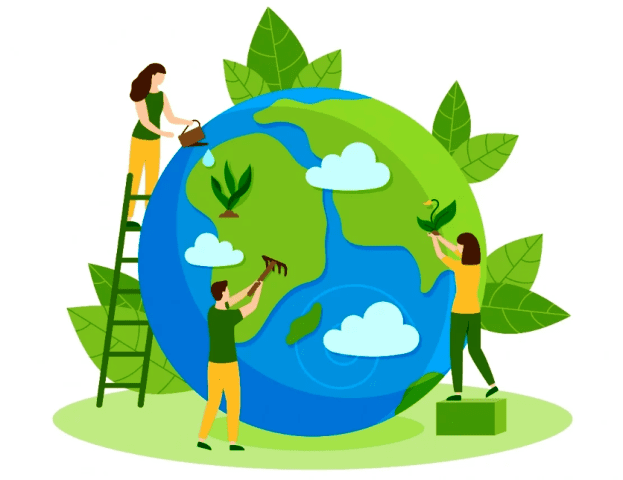
What can be Done to Prevent the Impact of Climate Change on Water Quality?
Both the causes and consequences of climate change must be addressed to prevent climate change from affecting water quality. Here are some important strategies to consider:
Reduction of greenhouse gas emissions:
Climate change is primarily caused by the release of greenhouse gases into the atmosphere. Switching to cleaner, renewable energy sources such as solar and wind, and adopting energy-efficient practices can significantly reduce our carbon footprint and mitigate the impact of climate change on water quality. Can.
Protect water sources:
It is important to protect water sources such as rivers, lakes and groundwater from pollution and deterioration. Strict regulation and good management practices in agriculture, industry and urban areas help prevent pollution and maintain water quality.
Implementing sustainable land management practices:
Land-use change, deforestation and unsustainable agricultural practices can cause soil erosion and nutrient runoff, leading to water quality degradation. Promoting sustainable agricultural practices such as agroforestry, organic farming and precision irrigation can help minimize these impacts.
Improving water infrastructure:
Investing in resilient water infrastructure can help mitigate the impact of climate change on water quality. This includes improving wastewater treatment systems, expanding water storage and distribution capacity, and implementing nature-based solutions such as wetland restoration and green infrastructure.
Strengthening water resource management:
An integrated water resource management approach is essential for adapting to changing climatic conditions. This includes effective monitoring, planning and allocation of water resources to ensure equitable access and minimize conflict. In addition, implementing water-saving measures can help reduce stress on water supplies during droughts and reduced rainfall.
Promoting Public Awareness and Education:
Educating communities about the link between climate change and water quality is important to foster a sense of responsibility and encourage sustainable practices. Raising awareness about the importance of water conservation, pollution prevention and sustainable living can empower individuals to take action.
International cooperation:
Global cooperation is needed to tackle climate change and its impact on water quality. By collaborating with other countries and sharing knowledge, resources and technologies, we can accelerate progress in mitigating climate change and protecting water resources around the world.
While these strategies can help mitigate climate change impacts on water quality, it is important to note that some changes may already be inevitable. Therefore, it is also important to develop adaptation strategies that focus on managing and responding to water quality changes due to climate change.
Conclusion:
Climate change will have multiple and varied impacts on water quality. Sea level rise, biodiversity loss, devastating storms and severe drought are some of the impacts of climate change. Poor water quality poses health risks to humans and animals. There are many ways to prevent the negative impacts of climate change on water quality, including reducing greenhouse gas emissions, protecting water resources, and improving water infrastructure. It is important to develop adaptation strategies that focus on managing and responding to water quality changes due to climate change.
